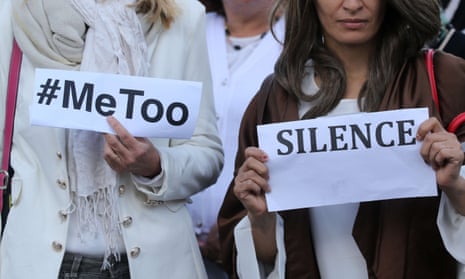Rushing to judgment without due process defies core values that Americans hold dear. Everybody should have the opportunity to state their case, whether a victim or an alleged perpetrator. The flip side – quietly sweeping a scandal under the rug – is equally offensive.
At a time when improper interactions between men and women, particularly in the workplace, are part of a raucous national conversation, we must find a way to ensure that everyone – the public, private and public institutions, victims and alleged perpetrators – is given a fair shake through a swift and fair process.
We must be mindful of transparency, recalling Justice Louis Brandeis’s iconic proclamation that sunlight is the best disinfectant. Of course, sunlight may also cause melanoma! How do we deal with these competing goals and ensure that a mere allegation, without compelling evidence, does not quickly morph into judgment?
The public conversation has largely been advanced through the press and social media. Stories have been generated by alleged victims who speak with reporters, or tell their stories to others, who then “go public”. Whether published in mainstream outlets, tabloids or postings on social media, the accounts often go viral. The media may fairly report allegations of wrongdoing. Nonetheless, in many instances – particularly given the number of sensational or ideological outlets – this may not be the case.
There will be times where victims are harmed in ways that repeat and reinforce their victimization; there may also be times where false or specious allegations become public, though it is later shown that the alleged perpetrator is innocent of wrongdoing or of the type of misbehavior that has been broadcast.
Sexual harassment allegations have reached almost every industry and institution. No one is immune. Recently, the federal judiciary suffered its first public revelation of sexual improprieties by a distinguished appellate judge, who chose to resign before an investigation of the charges. Earlier allegations rocked the political world with the sexual abuse allegations against Roy Moore, the Republican candidate for the Alabama Senate seat.
Before that, the media, the entertainment world, academia, cultural institutions (notably opera and art), and – yes – journalism were repeatedly hit with allegations against some of their most high-profile members.
In corporate America there has recently been a groundswell of high-profile “televictions” of men accused of workplace harassment. Often this is not wanted by either the victims or the accused.
Ideally, an accuser should be able to confidentially bring her allegations to an independent fact-finding body, whose conclusion may or may not become public depending on many factors – including a victim’s desire not to “go public” based on the consequences she may suffer in her career.
Yet there may be an overriding need for transparency so that other potential victims are warned of known predators. We are not advocating that findings of wrongdoing be buried. But the views of all involved must be carefully considered. Any investigative process must have integrity and be perceived as such by the victim, the accused and the public. Otherwise, there can be no trust in the process.
Lack of trust in an in-house investigation may be one reason some victims tell their story to the press rather than seeking internal redress. Once they do that, they have waived confidentiality. But what about others who may want to come forward privately to address similar actions by the same person?
And what about the accused, forced to engage in trial by media – a boon for public relations firms, but often a hindrance to truth-finding. It is a difficult question whether the public’s right to know should outweigh the privacy interests of both the victim and the accused.
The critical component for internal investigations is whether they are truly independent. If a corporation – which may ultimately bear civil or potentially criminal liability for the conduct of its harasser/employee – conducts the investigation, even through its general counsel’s office, the investigation may appear to lack integrity, particularly if the accused is cleared of wrongdoing. The integrity of the process must be the sine qua non of any investigation.
Further demonstrating the need for an independent investigation is the recent revelation that the United States Department of Justice failed to properly handle sexual harassment complaints within its own ranks.
The Department’s inspector general reportedly noted that employees who acted improperly did not receive appropriate punishments. He conceded that complaints had been mishandled and urged “high level” action to address the problem. No organization can be sure that sexual misconduct allegations will not emerge. When they do the organization must be ready to respond decisively.
If an investigation is viewed as a “whitewash”, the victim and the public may rightly see the organization as having twice victimized the victim. There can be no worse result for the victim, or the employer, and even the employee who has been exonerated.
Even if a company assigns its investigation to outside professionals with a reputation for integrity, the fact remains that the corporation paid for it, with the lingering perception that the outside “experts” did the corporation’s bidding. While there is no perfect solution, proceeding with an outside professional seems the better course of action.
Most important, one size simply does not fit all. Investigations need to be tailored to the needs of the particular situation, the perceived bona fides of the complainant, the wishes of the accusers, and the consequences that publishing the findings may have to the commissioning entity.
Corporations and other organizations face difficult times in the days ahead due to the wayward acts of some wrongdoers in their midst, or because of accusers who severely misperceived, grossly overstated or even outright lied about acts allegedly committed by the accused.
Separating the wheat from the chaff and deciding how to clean house, how to investigate, disclose and deal with the results is a challenge, particularly given the striking events of the last few months.
- Shira Scheindlin is a lawyer with Stroock & Stroock & Lavan. Judge Scheindlin served for 22 years as a US district judge for the Southern District of New York.
- Joel Cohen is a lawyer with Stroock & Stroock & Lavan. Mr Cohen is a former federal prosecutor.








